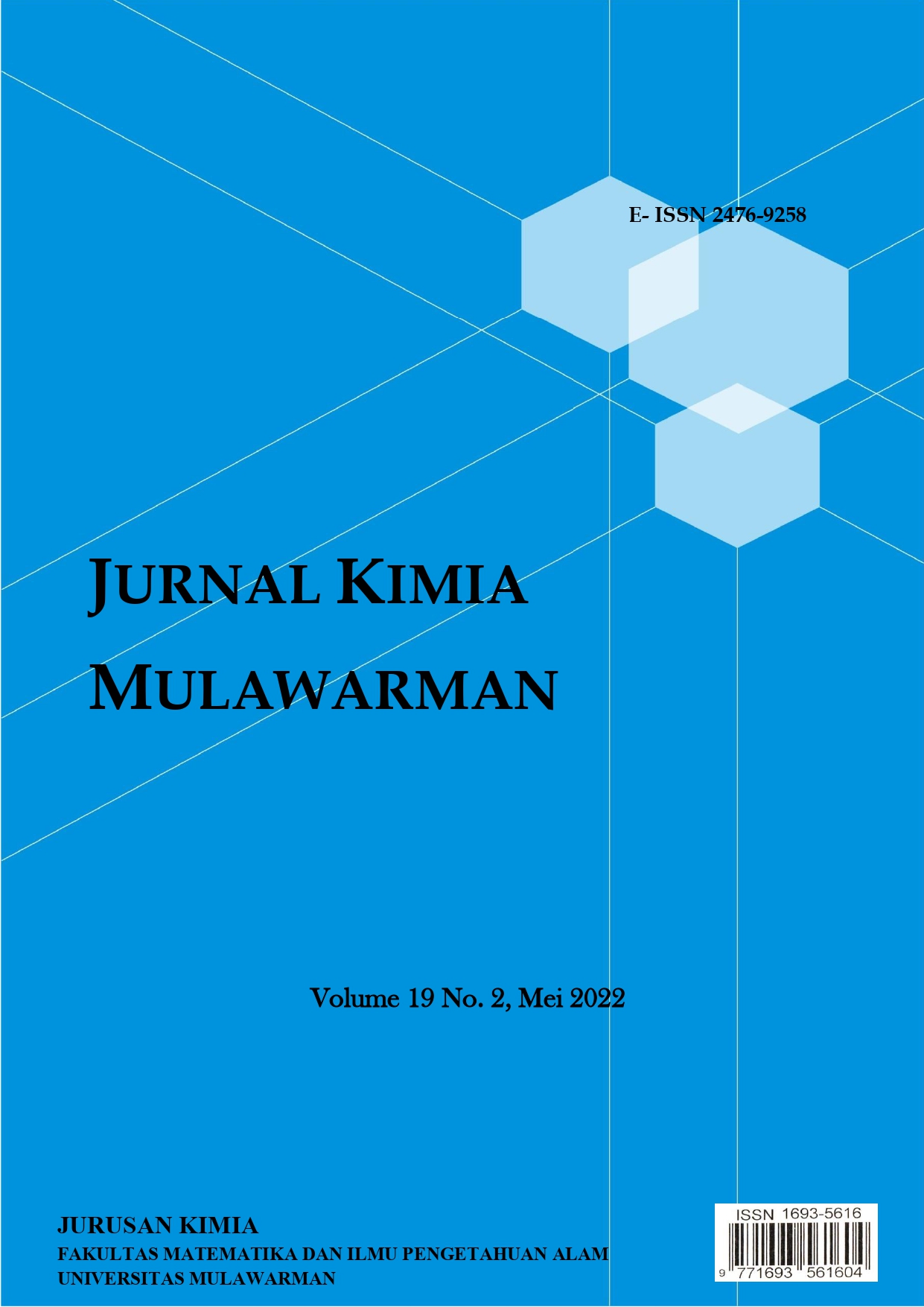Molecular Structure And Electronic Properties Of Eugenol And Its Analogues Using Dft
DOI:
https://doi.org/10.30872/jkm.v19i2.1123Keywords:
Eugenol, Methyl Eugenol, Atomic Charge,, HOMO, LUMOAbstract
Eugenol is the active molecule naturally found in clove oil. The calculations have been done for the eugenol and its derivatives computationally. This computational calculation aims to obtain a stable structure and electronic properties of eugenol, methyl eugenol, and acetyl eugenol. The computational calculation used DFT for geometry optimization in the gas phase using B3LYP functional and 6-31G(d) as the basis set. The optimized structure of eugenol and its derivatives is not planar. The presence of methoxy replacing hydroxy increases the bond length and decreases the bond angle and the dihedral. The electronic properties such as atomic charge and density of HOMO-LUMO show the difference between the three molecules.
Downloads
References
[2] H.-H. Leem, E.-O. Kim, M.-J. Seo, and S.-W. Choi, “Antioxidant and Anti-Inflammatory Activities of Eugenol and Its Derivatives from Clove (Eugenia caryophyllata Thunb.),”Journal of the Korean Society of Food Science and Nutrition, vol. 40, Oct. 2011, doi:10.3746/jkfn.2011.40.10.1361.
[3] S. M. de Morais et al., “Thymol and eugenol derivatives as potential antileishmanial agents,” Bioorganic & edicinal Chemistry, vol. 22, no. 21, pp. 6250–6255, Nov. 2014, doi:10.1016/j.bmc.2014.08.020.
[4] Y. T. Male, I. W. Sutapa, M. F. Maahury, M. Jamal, and D. Male, “Computational Study Potency of Eugenol and Safrole Derivatives as Active Sunscreen Material,” molekul, vol. 17, no. 1, pp. 39–48, Mar. 2022, doi:10.20884/1.jm.2022.17.1.5574.
[5] M. A. Kurniawan, S. Matsjeh, and S. Triono, “Conversion of eugenol to methyleugenol:Computational study and experimental,” in AIP Conference Proceedings, Las Vegas, Nevada, USA, 2017, p. 020109. doi: 10.1063/1.4978182. [6] M. F. Maahury and M. A. Martoprawiro, “Computational Study of Anthocyanin as Active Material in Dye-Sensitized Solar Cell,”J. Phys.: Conf. Ser., vol. 1463, no. 1, p. 012014, Feb. 2020, doi: 10.1088/1742- 6596/1463/1/012014.
[7] M. F. Maahury, Y. T. Male, and M. A. Martoprawiro, “DFT Study of Leuco-Indigo and Indigo as Active Material in Dye- Sensitized Solar Cell,” Molekul, vol. 15, no. 2, p. 114, Jul. 2020, doi:10.20884/1.jm.2020.15.2.592.
Downloads
Published
Issue
Section
License
Authors retain copyright and grant the journal right of first publication with the work simultaneously licensed under a Creative Commons Attribution License that allows others to share the work with an acknowledgement of the work's authorship and initial publication in this journal.
Authors are able to enter into separate, additional contractual arrangements for the non-exclusive distribution of the journal's published version of the work (e.g., post it to an institutional repository or publish it in a book), with an acknowledgement of its initial publication in this journal.
This license requires that reusers give credit to the creator. It allows reusers to distribute, remix, adapt, and build upon the material in any medium or format, even for commercial purposes. If others remix, adapt, or build upon the material, they must license the modified material under identical terms.



